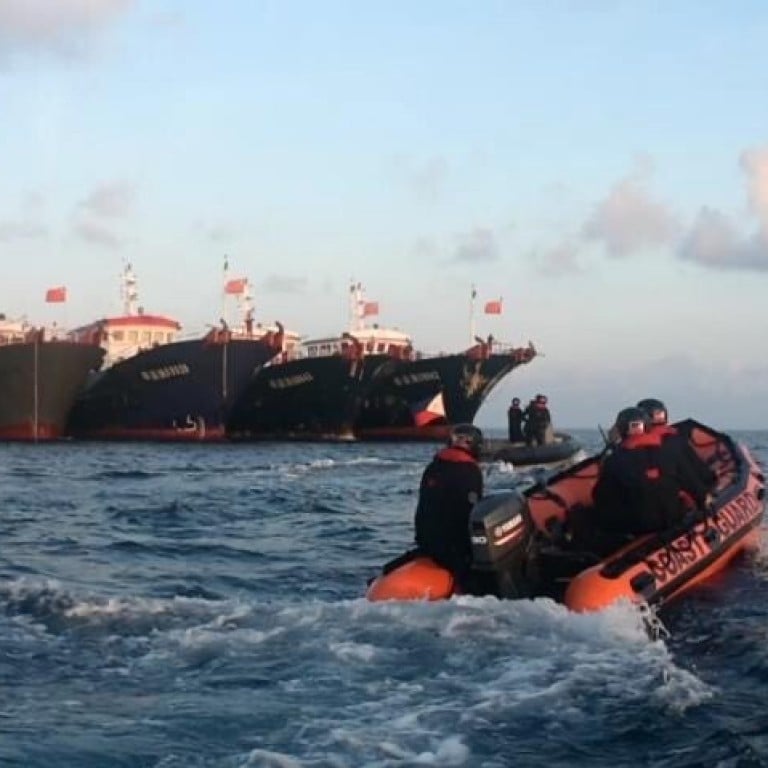
South China Sea: 300 Chinese ‘maritime militia’ vessels in Spratly Islands at any time, says US report
- Chinese boats receive US$3,700 government fuel subsidy a day for operating in disputed waters, says CSIS report
- Researcher disputes that the crews are militia, saying most Chinese fisherman do not have military training
The report released on Friday by the Washington-based Centre for Strategic and International Studies said the militia – comprised mostly of fishing vessels – had expanded and been involved in aggressive operations since 2000.
“Since the completion of China’s artificial island outposts in 2016, militia boats have been deployed to the Spratlys in greater numbers and on a more constant basis than ever before,” the report funded by the US State Department said.
“The militia, as currently constituted in the South China Sea, operates from a string of 10 ports in China’s Guangdong and Hainan provinces. Remote sensing data indicates that roughly 300 militia vessels are operating in the Spratly Islands on any given day.”
The report, titled “Pulling Back the Curtain on China’s Maritime Militia”, identified 122 militia vessels, as well as 52 other ships considered likely to be part of the militia, based on media reports, remote sensing data and maritime patrols in the disputed waters.
The report said the maritime militia interfered with the fishing, seabed exploitation and other activities of Southeast Asian states, citing the example of the vessel Bin Hai 285 which was involved in the ramming of the Vietnamese surveillance vessel KN-951 in 2014. The Chinese vessel was owned by China Oilfield Services.
China’s coastguard law understandably worrying for Asean nations: experts
The owners of the militia vessels are concentrated along the Chinese coast closest to the disputed waters, with 22 of 28 companies and fishing co-operatives identified as directly owning at least one militia or likely militia vessel based in Guangdong province. Five are in Hainan province.
The report said the Chinese government was subsidising the boats, with vessels at least 55 metres (180 feet) long with an engine power of at least 1,200kW operating in the Spratly Islands – known in China as the Nansha Islands – receiving fuel subsidies of 24,175 yuan (US$3,700) a day.
But Chen Xiangmiao, an associate research fellow for the National Institute for South China Sea Studies, said it was inappropriate and an exaggeration to say fishermen in the South China Sea were part of a maritime militia. He said the CSIS report did not precisely define what constituted maritime militia.
What are rival claimants building on South China Sea islands and reefs?
“My understanding of militia is people who are undergoing military training while doing other activities. But most of the fishermen in China do not have military training, and they should not be seen as militia,” Chen said.
“I don’t think we can say it is an act of militia when a fishing boat encounters foreign law enforcement vessels and deals with those vessels.”
Additional reporting by Laura Zhou

